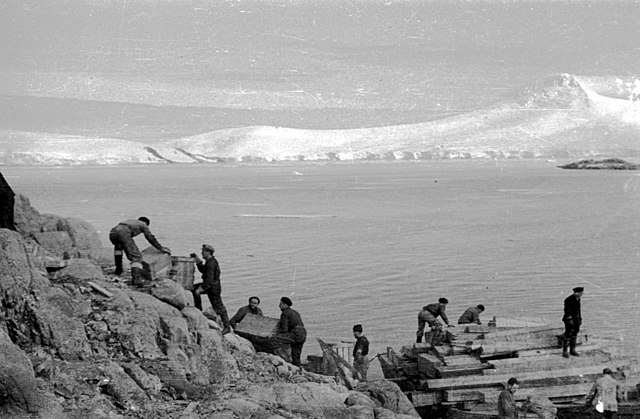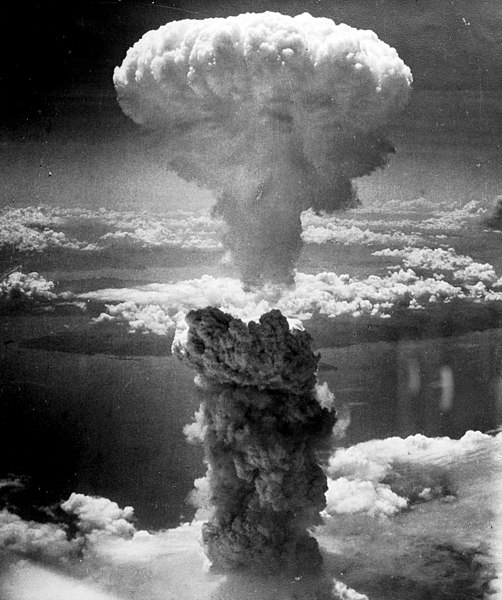Almost every country in the world participated in World War II. Most were neutral at the beginning, but only a relative few nations remained neutral to the end. The Second World War pitted two alliances against each other, the Axis powers and the Allied powers. It is estimated that 74 million people died, with estimates ranging from 40 million to 90 million dead. The leading Axis powers were Nazi Germany, the Empire of Japan and the Kingdom of Italy; while the British Empire, the United States, the Soviet Union and China were the "Big Four" Allied powers.
Albanian partisans fighting against the Germans
Anti-aircraft fire during a German air raid on Free French-held Algiers, 1943.
SDF forces enter Piazza Italia after the capture of Tripoli, 1943.
Personnel of Operation Tabarin unload supplies at Port Lockroy, 1944.
World War II or the Second World War was a global conflict between two major alliances: the Allies and the Axis powers. The vast majority of the world's countries, including all the great powers, fought as part of these military alliances. Many participating countries invested all available economic, industrial, and scientific capabilities into the war, blurring the distinction between civilian and military resources. Aircraft played a major role, enabling the strategic bombing of population centres and delivery of the only two nuclear weapons ever used in war. It was by far the deadliest conflict in history, resulting in 70–85 million fatalities. Millions died due to genocides, including the Holocaust, as well as starvation, massacres, and disease. In the wake of Axis defeat, Germany, Austria, and Japan were occupied, and war crime tribunals were conducted against German and Japanese leaders.
Image: Bundesarchiv Bild 101I 646 5188 17, Flugzeuge Junkers Ju 87
Image: Matilda tanks on the move outside the perimeter of Tobruk, Libya, 18 November 1941. E6600
Image: Nagasakibomb
Image: Bundesarchiv Bild 183 R76619, Russland, Kesselschlacht Stalingrad








